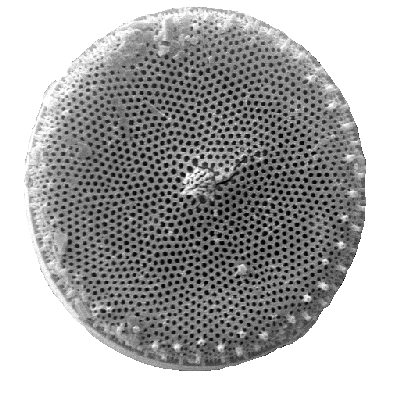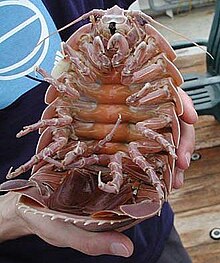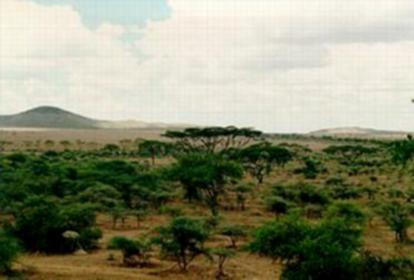
Thursday, December 2, 2010
Reflecting on Silkwood
Silkwood was an interesting movie but frustrating in that it ends more or less bleakly. The protagonist dies and the antagonist (the company) as far as I can gather gets away with what it's done. The fact that it is heavily implied that Silkwood was killed makes the matter even more frustrating. To clarify on what I am saying, yes the plant closed down but the company heads behind the plant are not likely to be too far harmed by the procedure. They may loose a little bit of money yes but the overall scheme goes on. I understand now why Silkwood was such a controversial character. She was... strange. The overall plot reminded me of Owens Plant which is a place where my father worked before I was born. He would occasionally tell me stories about other people who worked there (though it wasn't the kind of place where women usually worked being mainly hard labor). The underhandedness of it all is sort of shocking but not completely surprising. There are trucking companies in the US today, for example, that will fire employees who are caught speeding but require them to deliver in a time frame that requires them to speed. So in that respect the idea that a company will get away with what it can, even if it is bad for the employee is not really surprising so much as frustrating.


Tuesday, November 30, 2010
Monday, November 29, 2010
Hitichi Lab Report
Wild Ginger

Wild Ginger is known as Wild ginger because it tastes and smells similar to the root of the same name even though there is no other relationship between the two plants. Wild Ginger grows best in rich moist soil where leaves and other plant matter has degraded and as such usually grows in deciduous forests. Wild Ginger has distinctly fuzzy heart-shaped leaves that are easily denoted from surrounding plants. Wild Ginger has been reported to have medicinal properties and can be used as a seasoning if prepared correctly.
Leaf Litter Decomposition

When leaves fall from plants, and especially trees, it creates a layer of leaves on the floor of the area around the plants called leaf litter. When leaf litter decomposes it creates CO2 and other minerals which are absorbed into the soil. This means that leaf litter decomposition is a major contributing factor to how rich in nutrients the soil is in a given area.

The Southern Pine Beetle

Located mainly in the Southern US, Mexico, and central America the Southern Pine Beetle is one of the most devastating destroyers of pine trees on the planet. The insect both grows and reproduces rapidly leading in immense outbreaks that are quick and hard to predict. The Southern Pine Beetle feeds on pine trees and usually leads to the destruction of a localized area before migrating to a new area to feed on more trees. The Southern Pine Beetle will eat any pine tree of any kind but generally seems to prefer Virginia, Pond, and Pitch Pines. It is easy to note where a Southern Pine Beetle has been at work because it leaves small tunnels in the pine tree which are usually slightly larger than a pencil.

Wild Ginger is known as Wild ginger because it tastes and smells similar to the root of the same name even though there is no other relationship between the two plants. Wild Ginger grows best in rich moist soil where leaves and other plant matter has degraded and as such usually grows in deciduous forests. Wild Ginger has distinctly fuzzy heart-shaped leaves that are easily denoted from surrounding plants. Wild Ginger has been reported to have medicinal properties and can be used as a seasoning if prepared correctly.
Leaf Litter Decomposition

When leaves fall from plants, and especially trees, it creates a layer of leaves on the floor of the area around the plants called leaf litter. When leaf litter decomposes it creates CO2 and other minerals which are absorbed into the soil. This means that leaf litter decomposition is a major contributing factor to how rich in nutrients the soil is in a given area.
The Southern Pine Beetle

Located mainly in the Southern US, Mexico, and central America the Southern Pine Beetle is one of the most devastating destroyers of pine trees on the planet. The insect both grows and reproduces rapidly leading in immense outbreaks that are quick and hard to predict. The Southern Pine Beetle feeds on pine trees and usually leads to the destruction of a localized area before migrating to a new area to feed on more trees. The Southern Pine Beetle will eat any pine tree of any kind but generally seems to prefer Virginia, Pond, and Pitch Pines. It is easy to note where a Southern Pine Beetle has been at work because it leaves small tunnels in the pine tree which are usually slightly larger than a pencil.
Favorite Aquatic Critters

Phytoplankton - Diatom
A form of microscopic photosynthetic algae, Diatom float through the ocean in microscopic clouds. They have no means of moving themselves but due to photosynthesis have very little means to do so. They provide the base tier of food even for other phytoplankton.
Zooplankton - Crystal Jelly
The bioluminescent Aequorea Victoria is a deepsea jelly is a transparent light blue variant that appears colorless in the blue waters it is usually seen swimming in. Like most jellyfish the crystal jelly has a distributed nervous system and paralytic tentacles. The crystal jelly's only known predator is the lion's mane jelly. Crystal jelly's blue photosynthetic light is transfored into green light by green photosynthetic protein, which is an important tool in the field of biology.

Aquatic macrophyte - Nelumbo (Lotus Flower)
The Lotus appears as a single flower with a variety of leaves attached by underwater vines. The leaves are solid enough for light animals like frogs and insects to stand on without the leaves going underwater. The Lotus regulates it's temperature so that insects will come to polinate it. The Lotus leaves have a special quality that causes water to stand on top of them in drop form, sometimes referred to as the lotus effect.

Fish - The Deep-Sea EelpoutRelatively new to discovery, not much is known about the deep-sea eelpout [Pachycara Priedei]. Uniformally bright pink and semi-translucent, the eelpout has small eyes which are not used for seeing but for picking up the bioluminescent signals that other deep-sea species tend to display. It's large humped nose is it's primary means of detection and is used to sense the movement of prey and predators in the deep. The deep-sea eelpout feeds mainly off of crustaceans that feed off of the carcases of large sea-mammals such as whales or large sharks.

Crustacean - Giant Isopod
First discovered in 1879, the GI usually measures in between 7.5 and 14 in. with a maximum weight of 3.7 lb and length of 30". They are carnivorous and feed on dead matter and also slow moving species like corral, sponges, and sea anemones.

Mammal - Leopard Seal
Generally a mixture of dark gray and black in color and by design incredibly muscular the Leopard seal weighs in at between 440 and 1000 lb. The leopard seal is an apex predator that generally has a diet consisting of fish and penguins, but the leopard seal will eat anything slow enough for it to catch and big enough to be worth the effort, though it needs to be mentioned that the leapard seal's teeth are of a special design to also allow the creature to sift krill.

My Favorite Biome

My favorite Biome is the Savannah.
Shape: Rolling Grasslands
Vegetation: Shrubs and Isolated Trees
Seasons: Two; one long and dry, the other short and wet
The savannah is characterised by it's two major seasons. The dry season is cooler (70 degrees) but both seasons are relatively neutral temperature-wise. The main deal is the precipitation. In the dry season a savannah would be lucky to get 6 inches of rain, while in the short summer it can usually expect somewhere between 15 to 25 inches of rain.
Ecological Niche of Your Favorite Organism
Favorite Organism: Tree Squirrel [Sciurinae Sciurini]
Squirrels live in virtually every habitat under the sun, though tree squirrels require dry woodland areas so that they can build nests and so that they can keep to the trees out of the reach of predators. The squirrel diet consists more or less of seeds and nuts so the squirrel ideally needs a large quanitity of nut / fruit bearing vegitation to stay healthy but squirrels are versitile and if there isn't enough vegitation in the area a squirrel will eat small veritbrates (such as frogs or lizards) or insects in order to survive. Squirrels gather food and hibernate during the winter so they need some sort of cove in order to stay warm, such as a tree-hole or a burrow hole in the side of a cliff, but this is not an extreme requirement for if there is an abundance of old trees or soft ground a squirrel will likely be able to make due.
Albino Tree Squirrel

Squirrels live in virtually every habitat under the sun, though tree squirrels require dry woodland areas so that they can build nests and so that they can keep to the trees out of the reach of predators. The squirrel diet consists more or less of seeds and nuts so the squirrel ideally needs a large quanitity of nut / fruit bearing vegitation to stay healthy but squirrels are versitile and if there isn't enough vegitation in the area a squirrel will eat small veritbrates (such as frogs or lizards) or insects in order to survive. Squirrels gather food and hibernate during the winter so they need some sort of cove in order to stay warm, such as a tree-hole or a burrow hole in the side of a cliff, but this is not an extreme requirement for if there is an abundance of old trees or soft ground a squirrel will likely be able to make due.
Albino Tree Squirrel

Friday, October 22, 2010
Mitochondrial Eve
'Mitochondrial Eve' is a term for the most recent female ancestor through which the entire human race can be traced back. The term comes from Eve, the first woman according to the Abrahamic Traditions, and mitochondrial DNA, the DNA that travels through the maternal portion of the genetic gift that every child receives, which can ultimately be traced back to Mitochondrial Eve. Motochondrial Eve most likely lived in East Afrika, about 200,000 years ago. One common misconception is that Eve was the only woman. In reality, this would have been impossible. She was one of many women with descendents alive today, but only her DNA is present in modern times do to the fact that eventually the other matriarchal lines must have had one generation during which no women were born, and men do not carry their mothers' DNA past their own Generation.
Pictures of Diversity
A Man from Africa
A Man from Portugal
A Canadian Woman
A Spanish Woman
A Chinese Man
Wednesday, September 8, 2010
MBL
I surfed into MBL's official website and read the organization's own explanations for the facility's purpose. According to MBL.edu the lab serves as an international location to educate and train new environmental scientists (Especially biology, biomedicine, and ecology) as well as a lab for environmentalists looking for a place to perform research. The year-round staff includes over 275 trained scientists and 1400 students come every year in order to study from specialists in specific fields linked to biology, biomedicine, and ecology.
Monday, September 6, 2010
What is 'The Butterfly Effect'
The butterfly effect is the concept that a butterfly flapping it's wings on one side of the world can create a wind that eventually causes devastation in another part of the world. It functions as a metaphor to explain how small changes in an environment and seemingly independent actions can lead to dramatic effects in the long run. Everything creates the butterfly effect all the time and the effect mainly functions as a method of warning people to pay close attention to their actions and to minute changes in the environment because of the long-term effects they might lead to.
Subscribe to:
Posts (Atom)



_Ithamir%20Neves%20de%20Souza.jpg)



